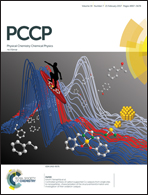How water mediates the long-range interactions between remote protein molecules
Abstract
The high crowding of macromolecules in the cytoplasm affects the processes that occur inside a living cell. It can, for example, promote the forming of various loosely connected structures of proteins. It also means that bulk water is, essentially, not present there. The relatively thin layer of solvent that separates macromolecules may be able to participate in the long-range interactions between them and make them respond to each other. Herein, we propose a mechanism in which water molecules can mediate inter-protein interactions. The origin of this phenomenon emanates from the unique properties of water.


 Please wait while we load your content...
Please wait while we load your content...